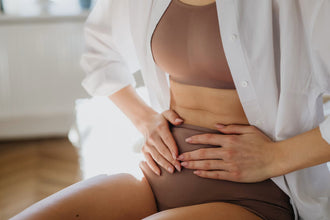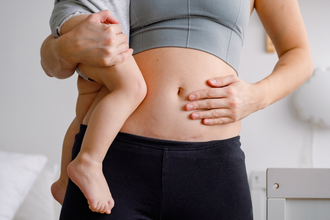
Dealing With Bruising and Discoloration During BBL Recovery
A Brazilian butt lift (BBL) is a surgical procedure where fat is transferred from a person’s belly, hips, lower back, or thighs to their buttocks. The resulting enhanced size and shape of the buttocks is almost certainly pleasing, to all concerned. Not so pleasing would be some immediate effects of the surgery on the patient, mainly the BBL-related bruising, discoloration and a degree of pain. This article covers the causes, types, and management strategies for bruising and discoloration following a BBL procedure.
Causes of Post-BBL Bruising
Bruising is a common and expected side effect after a BBL surgery. The injected fat and the process of liposuction (suction to remove fat from specific areas of the body to inject into the buttocks) can damage tiny blood vessels, called capillaries. Blood from the damaged vessels leaks into the surrounding tissues, resulting in the appearance of bruises.
| Factor | Description | How It Impacts Bruising |
|---|---|---|
| Extent of Liposuction | The amount of fat removed during the liposuction process can vary depending on the desired results. | More extensive liposuction can cause more blood vessels to be damaged, leading to more significant bruising. |
| Individual Susceptibility | Some individuals have a genetic predisposition to bruise more easily due to more fragile blood vessels. | Those with a higher susceptibility may experience more intense or longer-lasting bruising post-surgery. |
| Medications and Supplements | Certain medications and supplements, like blood thinners and anti-inflammatories, affect blood clotting. | These can make bruising more likely or more severe by preventing blood from clotting effectively. |
| Surgeon’s Technique | The skill and precision of the surgeon in handling tissues during the procedure. | A highly skilled surgeon can minimize tissue trauma, reducing the likelihood and extent of bruising. |
| Patient's Skin Type | Skin types, like thin or sensitive skin, can impact the appearance and severity of bruising. | Thin or fair skin can show bruises more prominently and take longer to heal compared to thicker skin types. |
Factors Contributing to Bruising
The extent and duration of bruising depends on a range of factors:
- Extent of Liposuction: How extensive the liposuction was, for collecting fat for transfer, can impact the degree of bruising. More extensive liposuction usually results in more bruising.
- Individual Susceptibility: Genetics play a role in how much a person bruises. Individuals with more fragile blood vessels are more prone to bruising.
- Medications and Supplements: Some medications, such as blood thinners (e.g., aspirin) and anti-inflammatory drugs, or nutrition supplements such as fish oil and vitamin E, can increase the risk of bruising by affecting blood clotting.
- Surgeon’s Technique: A skilled surgeon using precise techniques can minimize trauma to the tissues, thereby reducing bruising.
Types of Post-BBL Discoloration
BBL-related discoloration may not always be standard bruising but can take various forms. Understanding the different types of discoloration can help identify normal post-operative conditions versus complications that may require medical attention.
- Bruising (Ecchymosis): This is the most common form of discoloration. It appears as dark blue or purple patches on the skin and gradually changes color, turning greenish-yellow as the bruises heal.
- Hyperpigmentation: Some patients may experience darkening of the skin where liposuction was performed. This can be due to inflammation and excessive melanin production as the skin responds to trauma.
- Hematomas: This is a more severe bruising where blood accumulation under the skin forms a lump. Small hematomas usually resolve on their own, but larger ones may need to be drained by a medical professional.
- Seromas: Although not discoloration in the typical sense, seromas can cause swelling and a change in skin tone. These are pockets of fluid that may appear after surgery, particularly in the areas where liposuction was performed.
Managing Bruising and Discoloration
Effective management of bruising and discoloration is essential for a smooth recovery.

Here are some strategies to help reduce the common post-operative symptoms:
-
Follow Instructions
Heeding your surgeon's post-operative care instructions is critical for managing bruising and discoloration. Such advice may include:- Wearing compression garments, to promote proper circulation and minimize swelling.
- Discontinuing (for a period) certain medications and supplements that may increase bleeding or bruising.
-
Use Ice Packs
In the first 48 hours after BBL surgery, applying cold compresses to the affected areas can help reduce bruising. Cold therapy constricts blood vessels, which reduces blood flow to the area and limits bruising. -
Elevation and Rest
Keeping the lower body elevated can also help reduce swelling and bruising. When lying down, propping up your legs with pillows is a good idea. Avoid strenuous activities as they can worsen bruising or delay healing. -
Lymphatic Drainage Massage
Lymphatic drainage massage is a specialized, gentle massage that helps keep lymph fluid away from swollen areas. This in turn helps reduce bruising, swelling, and even the risk of fibrosis formation. However, no massage therapy should be started without consulting your surgeon first to ensure it is safe for your specific situation. -
Staying Hydrated and Nourished
Maintaining adequate fluid intake and nutrition is key to proper healing, as it helps flush out toxins and reduces inflammation, which helps minimize discoloration. A balanced diet rich in vitamins and minerals (possibly with the help of a BBL recovery supplement), particularly vitamin C and K, also supports skin health and reduces bruising.
| Nutrient | Food Sources | Role in Recovery |
|---|---|---|
| Vitamin C | Citrus fruits, strawberries, bell peppers | Promotes collagen synthesis, aids in skin repair, reduces bruising |
| Vitamin K | Leafy greens (kale, spinach), broccoli | Helps with blood clotting, reduces the severity of bruising |
| Zinc | Meat, shellfish, seeds, nuts | Supports immune function, aids in wound healing |
| Bromelain | Pineapple, supplements | Reduces swelling and inflammation, accelerates healing |
| Bioflavonoids | Citrus fruits, berries, onions | Strengthens capillaries, reduces bruising |

Signs of Abnormal Bruising or Discoloration
While some bruising and discoloration is to be expected after a BBL, it is essential to know when these symptoms may point to a complication. If you experience any of the following, contact your surgeon immediately:
- Severe pain or swelling that either does not improve, or worsens over time.
- Increasing redness or warmth around the bruised areas, which may indicate an infection.
- Persistent lumps or hard areas that do not diminish with time.
- High fever or chills, indicating some form of infection.
Bruising and Discoloration Recovery Timeline
Recovery from bruising and discoloration after a BBL procedure usually follows a predictable timeline. Understanding this timeline helps set realistic expectations and allows patients to monitor their progress. Here is what can be generally expected during the recovery timeline:
-
First Week Post-Surgery
- Bruising Peak: Patients experience peak bruising typically between the first 48 to 72 hours following surgery. This is also when discoloration appears darkest, often a deep blue or purple color.
- Swelling and Tenderness: The areas where fat was harvested or injected may feel particularly sore and swollen and experience tightness or a sensation of pressure.
- Initial Steps to Manage Discoloration: Cold compresses and compression garments are crucial during the first week. Surgeons often advise patients to limit physical activity to prevent trauma to the affected areas.
-
Second Week to End of the First Month
- Color Changes in Bruises: Bruises start to fade, indicating the body's natural healing process is at work.
- Reduced Swelling: The swelling and discomfort begin to subside. Lymphatic drainage massages, if okayed by your surgeon, can expediate recovery.
- Introduction of Light Activity: Some patients may be allowed light activity, such as walking, to promote blood circulation, which reduces discoloration faster.
-
One to Three Months Post-Surgery
- Significant Improvement: At the end of the third month, only light bruising and discoloration would remain, which should not cause discomfort.
- Hyperpigmentation Management: For patients experiencing hyperpigmentation, dermatologists or surgeons may suggest treatments that contain ingredients like vitamin C or niacinamide to improve skin tone.
- Returning to Normal Activities: At this stage, most patients can gradually resume their routine activities. However, strenuous exercise or activities that directly impact the buttocks should be avoided.
-
Beyond Three Months
- Monitoring for Persistent Discoloration: Some patients may still experience mild discoloration or swelling beyond the three-month mark. In the absence of any other symptom, this may merely indicate delayed healing.
- Long-Term Care Strategies: For long-term recovery, patients may be advised to use sunblock and continue gentle massage techniques to protect the affected skin from hyperpigmentation.

Lifestyle Changes to Support Recovery
Recovery from a BBL procedure is not solely about post-operative treatments; it is also possible to significantly impact the healing process by lifestyle adjustments. Here are a few recommendations:
- Avoid Smoking: Apart from generally being really bad for your health, smoking constricts blood vessels which in turn reduces blood flow, making healing slower and increasing the risk of complications.
- Stay Hydrated: Hydration helps flush out toxins, reduces inflammation, and directly contributes to faster recovery.
- Avoid Tight Clothing: Tight clothing restricts blood flow and may also irritate the bruised areas. Breathable fabrics help maintain a comfortable environment around the healed tissue.
- Avoid Direct Sun Exposure: UV exposure is bad for everyone, but post-BBL it can particularly aggravate hyperpigmentation and slow down healing. Use of high-SPF sunscreen or covering up outdoors is advisable.
Conclusion
Bruising and discoloration are common and entirely expected parts of making the choice to undergo a Brazilian butt lift procedure. Having a good understanding of their causes, types and management options helps patients be more proactive in anticipating and addressing their own needs immediately, which helps enhance their recovery experience and achieve optimal results. Both the symptoms and the underlying causes can be managed by proper treatments and protection measures, post-op nutrition, hydration and getting enough quality rest.
Always consult with your healthcare practitioner before starting any treatment regimen; it's important to take your medical history into account (as well as many other personal factors).
References:
https://www.ncbi.nlm.nih.gov/books/NBK585101/
https://www.webmd.com/first-aid/rice-method-injuries
https://www.ncbi.nlm.nih.gov/pmc/articles/PMC4958544/
https://www.ncbi.nlm.nih.gov/pmc/articles/PMC2671032/
General Disclaimer: All information here is for educational purposes only and is not meant to cure, heal, diagnose nor treat. This information must not be used as a replacement for medical advice, nor can the writer take any responsibility for anyone using the information instead of consulting a healthcare professional. All serious disease needs a physician.















